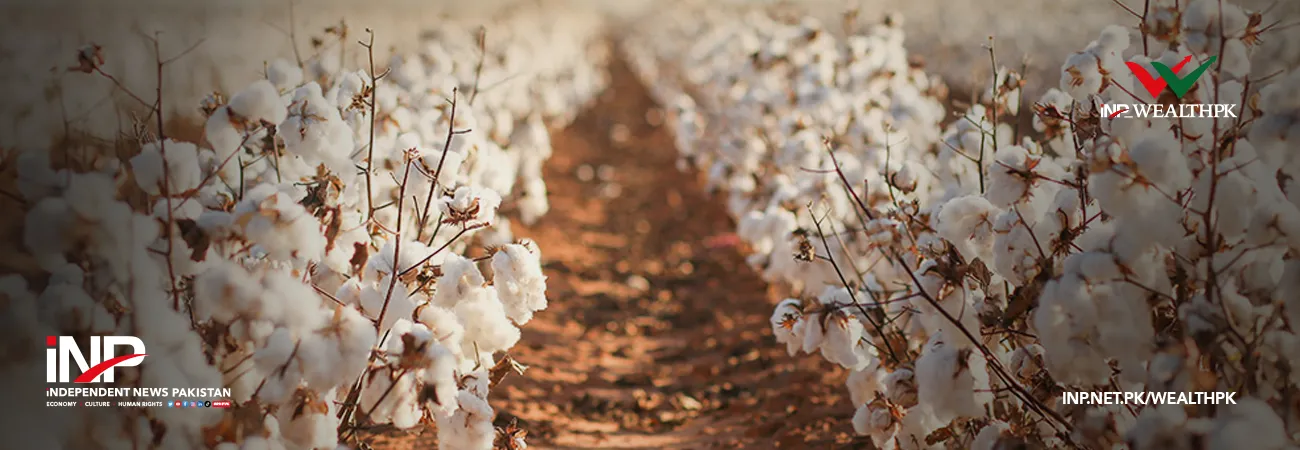INP-WealthPk
Muhammad Saleem
The Punjab government plans to bring one million acres of land under early cotton cultivation. Textile exporters and agriculture experts have lauded the Punjab government’s decision, suggesting that permanent solutions and mechanisms were needed to avoid a decline in production in future. Agriculture secretary Iftikhar Ali Sahoo said that a strategy had been finalised to achieve the target by April 15. He said special committees will be formed at district, division and provincial levels to achieve the target. Dr Aamir, a faculty member at the University of Agriculture Faisalabad, told WealthPK that cotton was the backbone of Pakistan’s economy as the textile sector was its major consumer. He argued that by focusing on cotton production, Pakistan could save millions of rupees being spent on importing cotton. “Everyone knows that cotton is vital for Pakistan’s economic development. A strong mechanism must be put in place to enhance cotton production in the country,” he said. “In the fiscal year 2011-12, the country recorded cotton production of 15 million bales, but production declined thereafter to 6-7 million bales per annum,” he said.
Ahmed, a textile exporter, told WealthPK that it was praiseworthy that the Punjab government planned to increase the cash crop production. He said the initiative came at a crucial time when Pakistan was struggling to fetch foreign exchange through textile exports. He said cotton was a “white gold” and a crucial component of Pakistan’s textile sector. He said a decline in cotton production created a plethora of problems for exporters. “They have to seek alternative ways to fulfill their foreign commitments. This decline actually benefits India, which is a business rival of Pakistan. To cash in on the situation, opportunists jump into cotton trade, and start importing cotton from India through different routes,” Ahmed said. Dr Amir, the faculty member of the agriculture varsity, said a committee was also formed in 2019 when decline in cotton production alerted the Punjab government. “The committee was tasked with detecting the factors which led to cotton decline. The committee officials were also tasked with suggesting measures to avoid such a situation in future.” He said the committee had worked hard and forwarded its valuable suggestions to the quarters concerned. “However, it is not known whether the recommendations of the committee were put to use to boost the production.”
The Pakistan Economic Survey 2022-23 reported that the cotton crop was badly damaged due to changing climatic conditions. It said cotton sowing area increased to 2,144 hectares during 2022-23 from 1,937 hectares the previous year, showing a growth of 10.7%. However, floods swept away entire crops in Sindh and Balochistan, reducing production to 4.910 million bales against the previous year’s 8.329 million bales, a steep 41% decline. Ahmed, the textile exporter, said the growers were still battling different insects like whitefly, thrips and pink bollworm. “Owing to these insects, farmers face decline in production each year,” he added. He said Rajanpur, DG Khan and Taunsa were the major cotton producing areas, but farmers needed to be provided with climate-resilient cotton seeds to boost their yields. “As an exporter, I know that Pakistan produces high-quality cotton varieties that can attract customers globally. However, our textile and agriculture sectors are grappling with issues like high costs of doing business and erratic power and gas supplies,” Ahmed said, adding that Faisalabad and Sahiwal divisions would be the main target areas, where land was available following the potato and maize harvest, for early cotton cultivation.
Credit: INP-WealthPk













